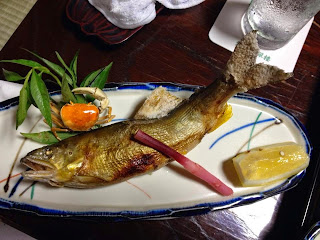The opportunity
to travel to Japan and the chance to experience the culture has been very
eye-opening for me as I now have a better understanding of how my ELL students
feel when they come to our country and our school. The artifacts that were collected and
purchased have opened up many dialogues on the similarities and differences in
our two countries. The student are
actively engaged in our discussions when we go over each artifact and genially
interested in what each item is.
I started out this school year with reading The Boy of the Three Year Nap
to my classes and then we viewed our blog the discussed our travels while in Japan. I explained the reasons we decided to write a
grant for Japan through Fund for Teachers, described some of the customs we were able to participate in
and observe, and I highlighted our stay in Hakone where we were able to experience
staying in a traditional ryokan and eating a kaiseki dinner. This tied directly into the story and we were
able to make connections to the story.
With my older students (4th grade), I introduced the tea
ceremony tradition. I was able to
explain the history, tools, and some back ground on the tea ceremony and then I
demonstrated how to do a simplified tea ceremony. My students then wrote out what they would
say in a tea ceremony that they were going to present to some 3rd
grades. After writing out what they
would say, they were able to practice how to perform a tea ceremony before we
presented to a 3rd grade class.
They did so well that they then performed a tea ceremony to the entire school during our Friday assembly. I love what one student wrote when he described a tea ceremony. He stated that "When we learn to do a tea ceremony, we learn to care for others."
So far, my
students have shown an increased enthusiasm for the country of Japan and I see
an active engagement in the lessons as I use the artifacts and my personal
experiences to bring life to each lesson.
I am beyond excited to see how the rest of this year progresses as my
students continue to gain a new appreciation for the Japanese culture and an
awareness to be kind and understanding of others no matter their background.








































